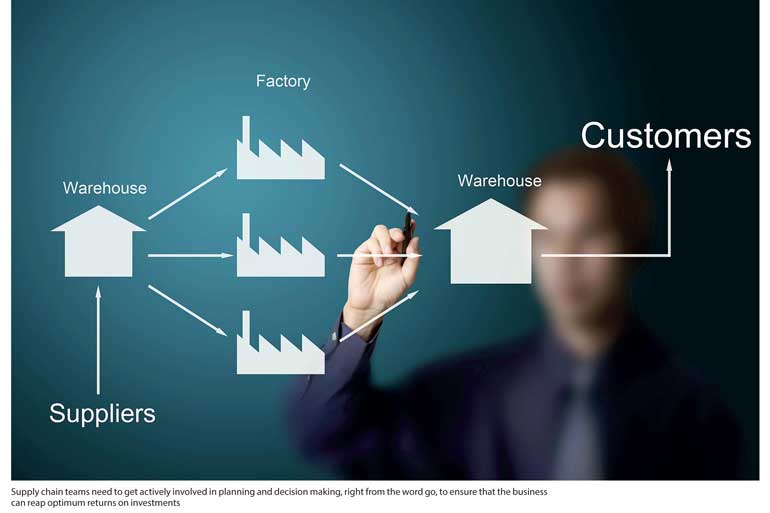Monday Mar 17, 2025
Monday Mar 17, 2025
Wednesday, 22 November 2017 00:00 - - {{hitsCtrl.values.hits}}

 By Noman A. Lutfi
By Noman A. Lutfi
There were days when business owners and managers had the luxury of making significant one time investments and reaping the benefits for years to come without any major new cash infusion. In today’s rapidly evolving global marketplace, businesses are eternally striving to innovate to ensure that they can stay in the game. They could be radical innovations that transform the entire business landscape or incremental innovations that offer the business a slight edge over competition.
Both forms of innovation involve sustained investments that go beyond research and development alone. Every business function from procurement and manufacturing to marketing and sales to operations and HR has a role to play in ensuring the success of the planned innovation. And hence, investments need to be made across the board when rolling them out.
Traditionally, individual business units, marketing divisions in particular, are known to spearheadcalls for such investments, championing them as a means to drive growth. The numbers presented in the proposed business case are reviewed by finance.Senior management then takes the recommendations of these teams into account before making the final call.
Often, few of the main supply chain units are left out of this process or consulted only at later stagesand step in only to implement the approved plans. This is largely due to the fact that it has long been viewed as a support function not only by outsiders, but by supply chain teams themselves. Hence they have been content with staying at the receiving end of business plans, despite being directly responsible fora substantial portion of their execution.This holds true forall types of investments made by a business.
A look at the different investment types will throw light on the role supply chain management needsto play in each of them.
The most common type of investment is related to supporting ongoing business growth. When itcomes to growth projections, business units often tend to make aggressively positive forecasts. And any shortfalls in these projections would have a direct impact on profitability.
A bulk of the investment made to deliver these numbers would go into the supply chain, especially into ramping up of production and distribution capacities. Hence, supply chain mangers need to offer a realistic view of growth opportunities when it comes to making such decisions. They need to re-evaluate the prudence of the projected volumes by taking past history and current market conditions into account.They also need to help the business stay cautiously positive and spread the investment across different phases of growth,thereby limiting any possible negative impact.
The next recurring investment is in upgrading manufacturing facilities. This falls directly within the purview of the supply chain unit which manages every aspect of the process, from procurement to production to distribution. Despite this, businesses tend to make these decisions based on a short term view of the numbers alone.
For instance, upgrading machinery might seem like an investment that could be avoided or substituted with lower cost alternatives. This is when supply chain teams need to step in and present their case. They need to demonstrate why the machinery needs to be upgraded and how paying a bit more for a particular system would bring in greater returns in the long run.They are the ones who can shed light on the production quality offered by the different alternatives under review. They also need highlight any related training costs that would have to be incurred to ensure that shop floor teams deliver at the highest possible levels with the new machinery.
Then come investments related to extensions to existing lines and refreshing older products.In both these cases, business units tend to focus on how consumers would view these products and the additional market shares and revenues they could bring in. The impact of these decisions on the manufacturing process needs to be taken into consideration.They might require ramping up of production facilities or introduction of new machinery. Such investments have a considerable impact on production costs both at the point of investment and in the form of depreciation costs in the future.
As in the case of supporting on-going business growth, supply chain managers need to help the business plan these investments,spreading it in phases to minimise any negative impact on existing operations.Proactive measures need to mitigate the impact of depreciation and control production and operations costs. This is especially critical when venturing into new market segments and introducing new product categories in particular.
Last, but definitely not the least, are investments related to innovations. Taking an optimistic view, we could attribute a global average success rate of about 50% to innovation initiatives. Thus there is a strong possibility for failure. While we cannot avoid innovating due to fear of failure, we need to be more cautious when planning and implementing innovation initiatives. Supply chain managers would have to get involved in the early stages and help business units and R&D teams understand sourcing, production and distribution constraints related to the venture.
This becomes all the more relevant in the case of radical innovations wherein the required technology, talent and other resources might not be currently available in required volumes or at the viable price points. They also need to share insights on market readiness based on their interactions with the sales channel to ensure that the product being developed is not ahead of its time.
Thus, supply chain teams need to get actively involved in planning and decision making, right from the word go, to ensure that the business can reap optimum returns on investments. After all, depending on the nature of the business, about 50% of a company’s capital rests in the hands of the supply chain function in the form of raw materials, finished goods, manufacturing and warehousing facilities, etc. Hence, they are uniquely poised to gain a holistic view of the business and add value at each stage.However, to do so, there first needs to be a shift in the mind set of supply chain professionals themselves, who have to start better comprehending the value they bring to the table.
(The writer is a supply chain professional with 25 years of experience. He is currently the Supply Chain Director for Unilever Sri Lanka Ltd. and is also a member of the company’s Management Committee.)
Discover Kapruka, the leading online shopping platform in Sri Lanka, where you can conveniently send Gifts and Flowers to your loved ones for any event including Valentine ’s Day. Explore a wide range of popular Shopping Categories on Kapruka, including Toys, Groceries, Electronics, Birthday Cakes, Fruits, Chocolates, Flower Bouquets, Clothing, Watches, Lingerie, Gift Sets and Jewellery. Also if you’re interested in selling with Kapruka, Partner Central by Kapruka is the best solution to start with. Moreover, through Kapruka Global Shop, you can also enjoy the convenience of purchasing products from renowned platforms like Amazon and eBay and have them delivered to Sri Lanka.
Discover Kapruka, the leading online shopping platform in Sri Lanka, where you can conveniently send Gifts and Flowers to your loved ones for any event including Valentine ’s Day. Explore a wide range of popular Shopping Categories on Kapruka, including Toys, Groceries, Electronics, Birthday Cakes, Fruits, Chocolates, Flower Bouquets, Clothing, Watches, Lingerie, Gift Sets and Jewellery. Also if you’re interested in selling with Kapruka, Partner Central by Kapruka is the best solution to start with. Moreover, through Kapruka Global Shop, you can also enjoy the convenience of purchasing products from renowned platforms like Amazon and eBay and have them delivered to Sri Lanka.